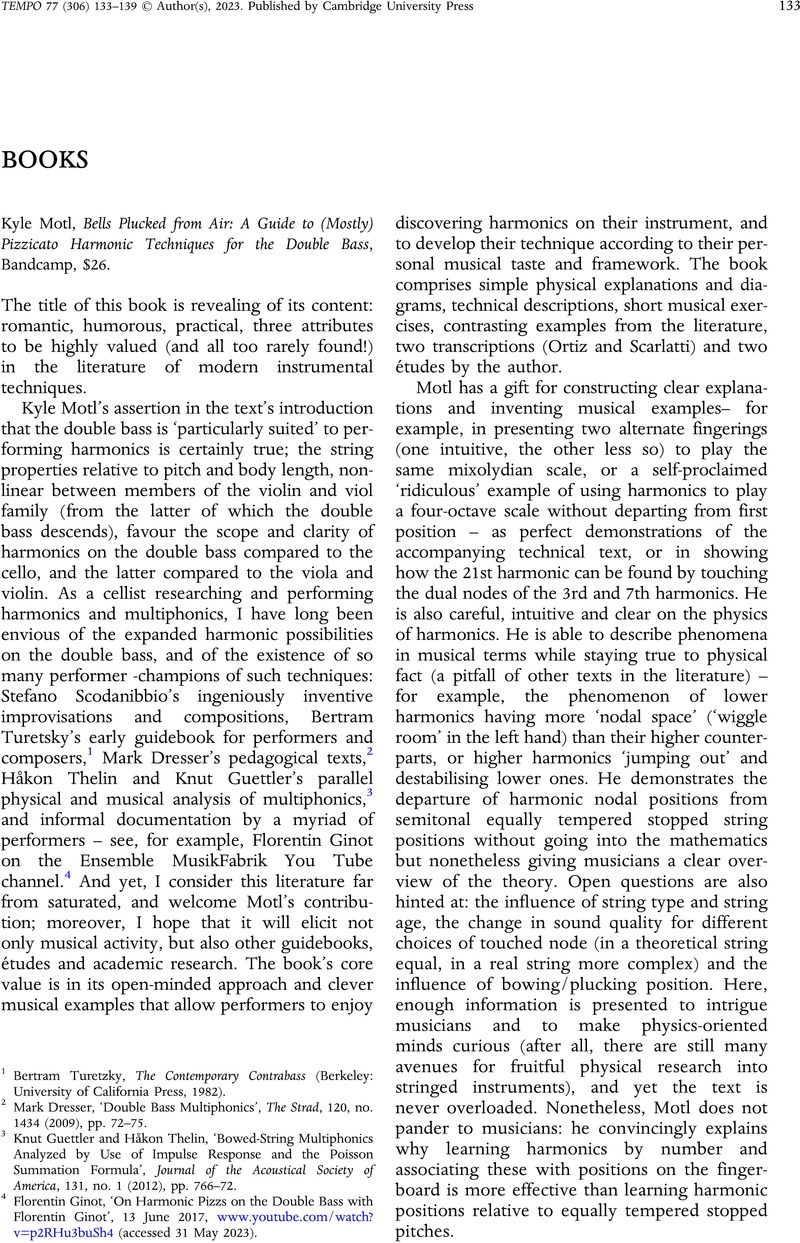No CrossRef data available.
Published online by Cambridge University Press: 01 September 2023

1 Turetzky, Bertram, The Contemporary Contrabass (Berkeley: University of California Press, 1982)Google Scholar.
2 Dresser, Mark, ‘Double Bass Multiphonics’, The Strad, 120, no. 1434 (2009), pp. 72–75Google Scholar.
3 Guettler, Knut and Thelin, Håkon, ‘Bowed-String Multiphonics Analyzed by Use of Impulse Response and the Poisson Summation Formula’, Journal of the Acoustical Society of America, 131, no. 1 (2012), pp. 766–72CrossRefGoogle ScholarPubMed.
4 Florentin Ginot, ‘On Harmonic Pizzs on the Double Bass with Florentin Ginot’, 13 June 2017, www.youtube.com/watch?v=p2RHu3buSh4 (accessed 31 May 2023).
5 Turetzky, The Contemporary Contrabass, p. 1.
6 Berlioz, Hector and Macdonald, Hugh, Berlioz's Orchestration Treatise: A Translation and Commentary (Cambridge: Cambridge University Press, 2002)CrossRefGoogle Scholar.
7 Fallowfield, Ellen, ‘Rethinking Instrumental Technique: A Case Study in String Multiphonics’, in Rethinking the Musical Instrument, ed. Doğantan-Dack, M. (Cambridge: Cambridge Scholars Publishing, 2022), pp. 45–69Google Scholar.
8 Dresser, ‘Double Bass Multiphonics’, pp. 72–75; Guettler and Thelin, ‘Bowed-String Multiphonics’, pp. 766–72; Walter, C. J., ‘Multiphonics on Vibrating Strings’, Tempo, 74, no. 291 (2020), pp. 7–23CrossRefGoogle Scholar; Fallowfield, Ellen, ‘Cello Multiphonics: Technical and Musical Parameters’, Tempo, 74, no. 291 (2020), pp. 51–69CrossRefGoogle Scholar.